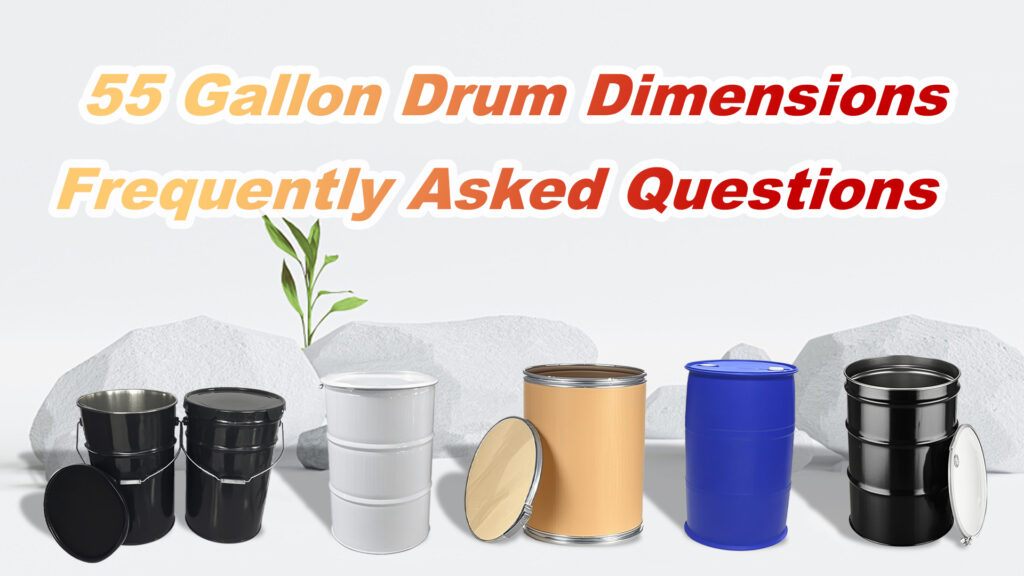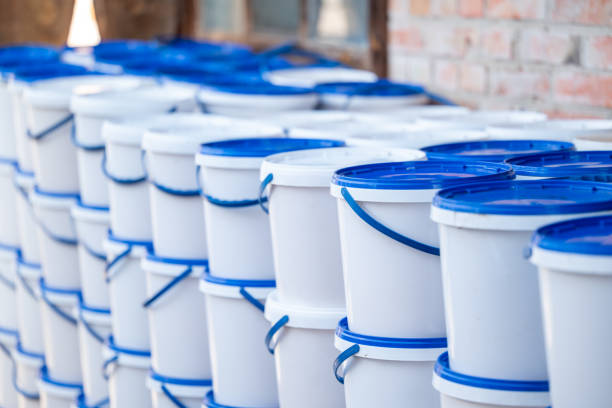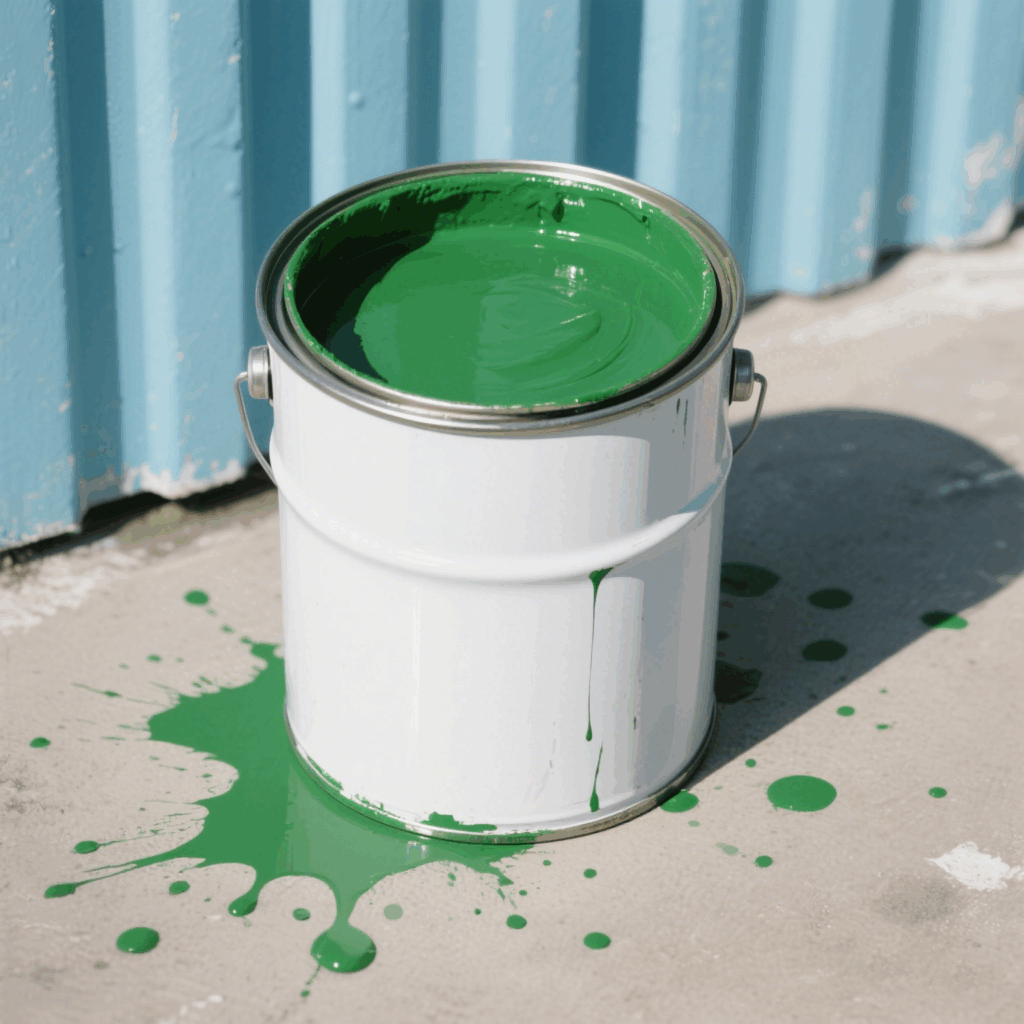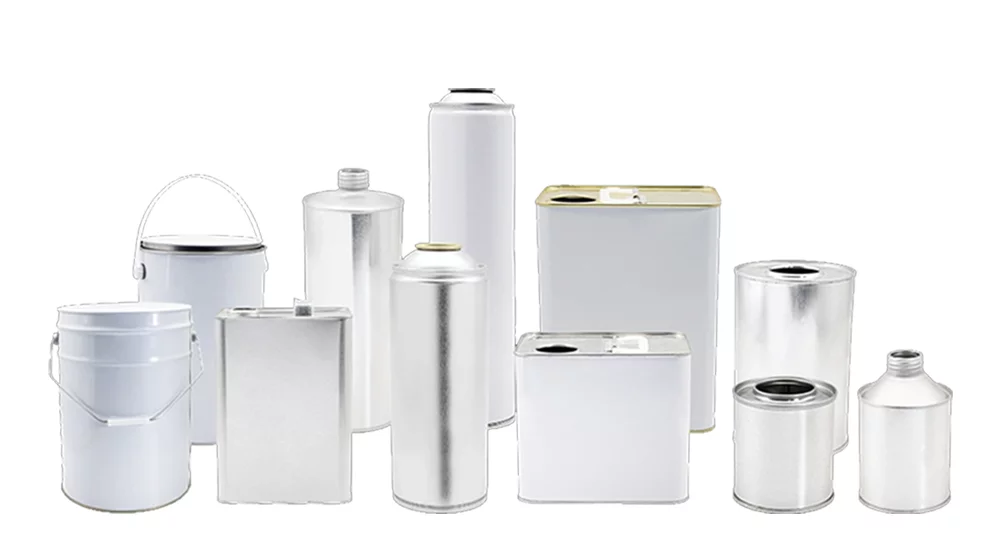Whipped cream aerosol cans are a staple in many kitchens, coffee shops, and dessert stations. They offer a quick and convenient way to top off your favorite desserts, drinks, and pastries with a light, fluffy cloud of whipped cream. But there’s more to using these cans than just spraying them directly from the nozzle. This guide is designed to solve all your problems when it comes to whipped cream in an aerosol can. Whether you’re wondering how they work, what goes into them, or how to make the most of your whipped cream aerosol can, this comprehensive guide will have you covered from every angle.
What Is Whipped Cream in an Aerosol Can?
Whipped cream in an aerosol can, commonly known as “whipped cream spray,” is a convenient, ready-to-use product designed for quickly dispensing whipped cream. Unlike the traditional method of whipping cream by hand or with an electric mixer, the aerosol version allows you to get fluffy, light cream at the press of a button. These cans are often used for garnishing desserts like pies, cakes, and sundaes, as well as for adding a creamy touch to beverages such as hot cocoa, milkshakes, or coffee.
Whipped cream aerosol is typically made by pressurizing heavy cream or a mixture of cream and other stabilizers in a can, allowing it to be dispensed as a light, airy foam when the nozzle is pressed. The result is the perfect whipped cream topping without the need for manual whipping.
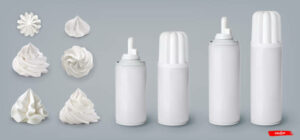
How Does a Whipped Cream Aerosol Can Work?
The mechanism inside a whipped cream aerosol can is quite ingenious. Here’s a step-by-step breakdown of how it works:
-
Pressurized Canister: The can is pressurized with nitrous oxide (N2O), which is a harmless gas used to create the whipped texture. This gas is what propels the cream out of the can and also aerates it, turning the cream into a light, fluffy texture.
-
Nozzle Mechanism: The nozzle has a small valve that, when pressed, releases the gas and cream together. The N2O gas creates bubbles within the cream, turning it into a foam that emerges as whipped cream.
-
Cream and Stabilizers: The can contains a mixture of cream and stabilizers that help the whipped cream maintain its form even after being dispensed. Some cans may also include sweeteners and flavorings, depending on the brand and type of whipped cream.
The Science Behind Whipped Cream in an Aerosol Can
The magic behind aerosol whipped cream lies in its creation of a stable foam. According to Dr. Harold McGee, an expert in food science, “The key to great whipped cream lies in the ability to trap air in the cream and stabilize it” (Harold McGee, On Food and Cooking: The Science and Lore of the Kitchen). The whipped cream aerosol can achieves this by using nitrous oxide gas (N2O), which, when dissolved in the cream under pressure, helps create the light, fluffy texture.
Когда вы нажимаете на форсунку, the N2O gas is released, creating bubbles in the cream. The cream molecules surround the gas bubbles, forming a stable foam. The result is a rich, airy whipped cream that is ready for use. This is why aerosol whipped cream tends to hold its shape much longer than manually whipped cream, which can deflate more quickly.
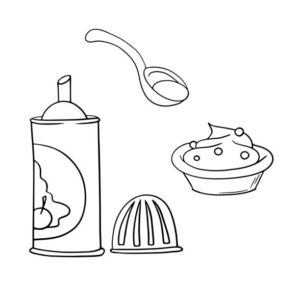
Ingredients of Whipped Cream in Aerosol Cans
The ingredients in whipped cream aerosol cans typically include:
-
Heavy Cream: The primary ingredient responsible for the creaminess and rich texture.
-
Nitrous Oxide (N2O): The gas used to create the whipped foam.
-
Sugar: Some brands add sugar or other sweeteners to enhance flavor.
-
Stabilizers and Emulsifiers: Ingredients like carrageenan, mono- and diglycerides, or guar gum help stabilize the whipped cream and keep it from separating.
In some cases, brands may offer flavored versions of whipped cream, such as vanilla or chocolate, which contain additional flavorings.
Choosing the Right Whipped Cream Aerosol: What You Need to Know
Not all whipped cream aerosols are created equal. Depending on your needs and preferences, there are several factors to consider when choosing the best aerosol whipped cream:
-
Type of Cream: Look for cans that use heavy cream as the base, as this will give you the richest and most authentic whipped cream experience.
-
Ingredients: If you’re looking for something more natural, check the ingredient list for additives like artificial sweeteners, ароматизации, and preservatives. Opt for brands that minimize these if you’re aiming for a more wholesome product.
-
Устойчивое развитие: Some brands use eco-friendly packaging and offer products with less environmental impact. These are great options if you’re environmentally conscious.
-
Flavored Options: Many brands offer flavored whipped creams, which can be a fun addition to desserts and drinks. If you’re planning to use whipped cream in various recipes, you may want to try different flavors.
How to Properly Use a Whipped Cream Aerosol Can
Using a whipped cream aerosol can is easy, but there are a few tips to ensure you get the best results:
-
Shake the Can: Before using, shake the can well. This helps mix the cream and gas, ensuring a smooth and consistent texture.
-
Hold the Can Upside Down: To dispense the whipped cream correctly, hold the can upside down. This allows the cream to flow out smoothly, rather than the gas alone.
-
Press the Nozzle Gently: Apply gentle pressure on the nozzle. A light, steady press will give you an even, fluffy stream of whipped cream.
Best Ways to Store Whipped Cream Aerosol Cans
Proper storage is essential for maintaining the freshness and quality of your whipped cream aerosol can. Here are a few tips:
-
Keep it Refrigerated: Always store the can in the refrigerator to maintain its freshness.
-
Avoid Direct Sunlight: Store the can away from direct sunlight or heat sources, as excessive warmth can affect the texture and shelf life of the whipped cream.
-
Check Expiry Dates: Like all dairy products, whipped cream in aerosol cans has a shelf life. Be sure to check the expiration date on the label before using.
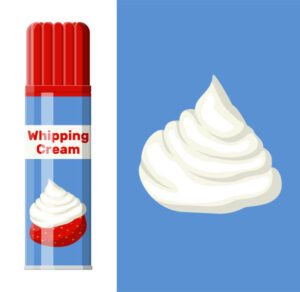
Troubleshooting Common Issues with Whipped Cream Aerosol Cans
Here are some common problems and solutions:
- No Cream Comes Out: If no cream comes out when you press the nozzle, the can may be empty, or the nozzle may be clogged. Try cleaning the nozzle with warm water or shaking the can more vigorously.
-
Flat Whipped Cream: If the cream appears flat or doesn’t hold its shape, it could be due to the can being improperly stored or past its expiration date.
-
Too Much Gas: If only gas comes out, it might be a sign that the cream has separated from the gas. Again, shaking the can should solve this issue.
Health Considerations: Is Whipped Cream Aerosol Safe?
Whipped cream in an aerosol can is generally safe for consumption when used as directed. Однако, there are a few health considerations:
-
Allergies: Be cautious if you have dairy allergies, as whipped cream aerosol products often contain milk and cream.
-
Nitrous Oxide: While nitrous oxide is commonly used in food products, it should not be inhaled directly, as it can be harmful.
The Environmental Impact of Whipped Cream Aerosols
The environmental impact of whipped cream aerosol cans is a growing concern due to the use of nitrous oxide and disposable cans. Some companies are addressing this issue by offering refillable cans or using more eco-friendly packaging materials.
Creative Ways to Use Whipped Cream Aerosol
Whipped cream is not just for topping pies and cakes. Here are some creative ways to incorporate whipped cream aerosol into your meals and drinks:
-
Hot Beverages: Add a dollop of whipped cream to hot cocoa, coffee, or tea for a decadent treat.
-
Fruit Topping: Pair whipped cream with fresh fruit like strawberries, peaches, or bananas for a light dessert.
-
Baked Goods: Top muffins, cupcakes, or pancakes with whipped cream for an extra touch of indulgence.
Recipes Featuring Whipped Cream Aerosol
-
Strawberry Shortcake: Layer fresh strawberries and whipped cream on a biscuit for an easy dessert.
-
Coffee Float: Top a cup of iced coffee with whipped cream and a drizzle of caramel syrup for an indulgent treat.
-
Chocolate Mousse: Use whipped cream to create a rich, airy chocolate mousse by folding it into melted chocolate.
Can Aerosol Whipped Cream Expire?
Да,Aerosol whipped cream, like most dairy-based products, does have an expiration date. While the can might last for a significant period, once opened, the cream can start to lose its quality over time. Below, we’ll explore everything you need to know about the expiration of whipped cream in aerosol cans.
1. How Long Does Aerosol Whipped Cream Last?
The shelf life of aerosol whipped cream is typically about 3-4 weeks past the expiration date, as long as it has been stored correctly. Однако, this is a general guideline, and the actual time may vary depending on the brand, type of cream, and storage conditions.
Unopened Aerosol Whipped Cream:
Unopened cans are usually good for several months past the printed expiration date. This is because they are sealed in a pressurized can, which helps maintain the cream’s freshness. Однако, the quality of whipped cream can deteriorate over time, and the longer the product sits in your pantry or refrigerator, the more likely the flavor and texture will degrade.
Opened Aerosol Whipped Cream:
Once opened, the whipped cream will start to lose its structure and consistency after about 2-3 weeks. The cream can begin to deflate, and you may notice a loss of its fluffy texture or a more watery consistency. It is best to consume whipped cream soon after opening it for optimal quality. Always store the can in the refrigerator once opened.
2. What Happens to Whipped Cream After It Expires?
Once the whipped cream in the aerosol can expires, it doesn’t automatically become unsafe to consume, but the quality and taste will degrade. Here’s what you might notice:
-
Loss of Texture: Whipped cream may lose its fluffy texture and become more liquid-like. The gas inside the can (nitrous oxide) dissipates over time, so the foam won’t hold up as well.
-
Change in Taste: You might notice a slightly sour or off flavor, particularly if the cream starts to spoil. The natural fats in cream can oxidize after extended storage, causing the whipped cream to taste rancid or stale.
-
Separation: As the cream deteriorates, it may start to separate, leaving behind liquid at the bottom of the can while the foam dissipates at the top. This indicates the product is no longer good for use.
3. How to Tell If Aerosol Whipped Cream Has Gone Bad
There are several ways to determine if your aerosol whipped cream has gone bad:
-
Look for a Discolored or Watery Appearance: If the whipped cream looks watery or has developed an off-white or yellowish tint, it may be past its prime.
-
Check the Nozzle: If the nozzle is clogged or difficult to press, it could be a sign that the gas has been depleted, preventing the cream from dispensing properly.
-
Smell: The best way to tell if whipped cream has gone bad is by its smell. If it has a sour or rancid odor, it is no longer safe to consume.
-
Taste Test: If the whipped cream looks fine but you’re unsure, taste a small amount. If the flavor is off, throw it out.
4. How Can You Extend the Shelf Life of Aerosol Whipped Cream?
While aerosol whipped cream does eventually expire, you can take steps to extend its shelf life:
-
Store it Properly: Always keep the can in the refrigerator. Do not store it at room temperature, as the warm conditions will accelerate spoilage.
-
Keep It Upright: Store the can upright in the fridge. This helps maintain the proper dispensing mechanism and ensures the gas inside the can doesn’t separate from the cream too quickly.
-
Do Not Expose to Heat or Sunlight: Keep your whipped cream away from direct heat or sunlight, which can cause the pressure inside the can to increase, potentially leading to leakage or spoilage.
5. Can You Still Use Expired Aerosol Whipped Cream?
In general, you shouldn’t use aerosol whipped cream after it’s passed its expiration date, especially if the texture or smell has noticeably changed. Однако, if it’s only slightly past the expiration date, and there are no obvious signs of spoilage (such as a bad odor or separation), it might still be okay to use for certain applications like garnishing desserts. Just be aware that the quality will be compromised.
Часто задаваемые вопросы (Часто задаваемые вопросы)
1. Can you eat whipped cream directly from the can?
Да, it’s perfectly safe to eat whipped cream directly from the can. Однако, it’s always best to enjoy it in moderation.
2. How long does whipped cream from a can last?
Whipped cream from a can usually lasts until the expiration date printed on the packaging. Once opened, it should be consumed within a few weeks.
3. Is whipped cream in a can vegan?
Traditional whipped cream in a can is not vegan, as it contains dairy products. Однако, there are vegan alternatives made with coconut milk or other plant-based ingredients.
Заключение
В заключение, whipped cream is a versatile and delicious topping that can elevate any dessert. Whether you’re preparing traditional sweets like strawberry shortcakes or exploring more innovative dishes like savory crepes, whipped cream seamlessly complements both sweet and savory recipes. Its airy texture not only adds richness but also lightness, making it a delightful addition to any meal. With so many variations available—from classic whipped cream to flavored or dairy-free alternatives—it’s an excellent choice for livening up any occasion and impressing your guests.
Однако, it’s important to remember that aerosol whipped cream cans contain pressurized gases like nitrous oxide and propane, which are highly flammable. While these cans are generally safe for home use, they should always be handled with care. Proper storage and careful handling are essential to ensure that you use your whipped cream safely and effectively.
For those seeking high-quality whipped cream cans, look no further than Взбитые сливки ФАНЬСУНЬ, a top manufacturer and supplier in China. Offering a wide variety of sizes and shapes, they cater to all your whipped cream needs, whether you’re a professional chef or simply a home baker.
Whether you’re a culinary enthusiast or simply looking to add a delicious finishing touch to your desserts, whipped cream remains an invaluable ingredient in kitchens around the world.

















